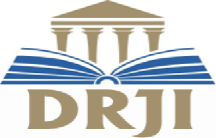
International Journal For Multidisciplinary Research
E-ISSN: 2582-2160
•
Impact Factor: 9.24
A Widely Indexed Open Access Peer Reviewed Multidisciplinary Bi-monthly Scholarly International Journal
Home
Research Paper
Submit Research Paper
Publication Guidelines
Publication Charges
Upload Documents
Track Status / Pay Fees / Download Publication Certi.
Editors & Reviewers
View All
Join as a Reviewer
Get Membership Certificate
Current Issue
Publication Archive
Conference
Publishing Conf. with IJFMR
Upcoming Conference(s) ↓
WSMCDD-2025
GSMCDD-2025
AIMAR-2025
Conferences Published ↓
ICCE (2025)
RBS:RH-COVID-19 (2023)
ICMRS'23
PIPRDA-2023
Contact Us
Plagiarism is checked by the leading plagiarism checker
Call for Paper
Volume 7 Issue 4
July-August 2025
Indexing Partners



















A Survey an Optimized Dense CNN Model for Recognizing Deepfake Images
| Author(s) | Mallikarjun Gachchannavar, Naveenkumar J.R., Radha Velangi |
|---|---|
| Country | India |
| Abstract | Deepfake detection relies on a deep learning model. Deepfake content is generated using artificial intelligence and machine learning techniques to swap one person’s face with another’s in images. These altered images are certain to have a significant impact on society. Deepfakes utilize advanced technologies such as machine learning (ML) and deep learning (DL) to develop automated techniques for generating deceptive content. The model is trained using the DFDC (Deepfake Detection Challenge) dataset, which includes 1, 00,000 videos comprising both real and fake content. This survey examines recent progress in deep learning techniques for detecting deepfake images, highlighting their growing significance in today’s digital landscape. The paper outlines the issues arising from deepfakes, explores the techniques for generating deceptive content, and analyzes various deep learning models employed in deepfake detection, such as convolutional neural networks (CNN’s), MTCNN (Multi-task CNN), and Facial Landmark. It emphasizes the ongoing battle between the progression of deepfakes and the evolution of detection methods, underscoring the need for advanced and flexible neural network architectures to effectively curb the dissemination of deceptive information. |
| Keywords | CNN (Convolutional Neural Networks), DFDC, MTCNN, and Facial Landmark. |
| Field | Computer > Artificial Intelligence / Simulation / Virtual Reality |
| Published In | Volume 6, Issue 4, July-August 2024 |
| Published On | 2024-08-23 |
| DOI | https://doi.org/10.36948/ijfmr.2024.v06i04.26429 |
| Short DOI | https://doi.org/gt8g5s |
Share this

E-ISSN 2582-2160
CrossRef DOI is assigned to each research paper published in our journal.
IJFMR DOI prefix is
10.36948/ijfmr
Downloads
All research papers published on this website are licensed under Creative Commons Attribution-ShareAlike 4.0 International License, and all rights belong to their respective authors/researchers.

